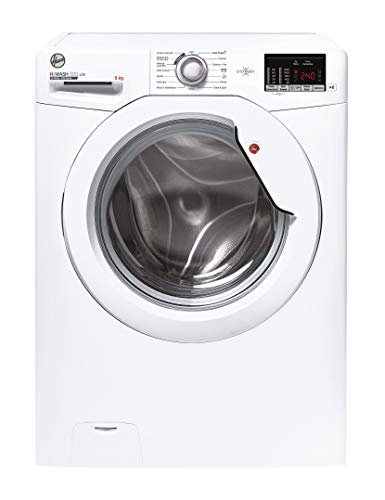A 9kg Washer Machine Is a Good Size For a Family and Provides Plenty of Flexibility
A 9kg washer machine is a good size for a family, and offers plenty of flexibility. These washers aren't as costly as they seem.
Kg is the amount of your laundry, dry or wet. It is the maximum amount machines can wash in a single wash.
A larger capacity drum is ideal for bulky items like duvets so you can wash them at home rather than taking them to the launderette.
Capacity
The capacity of a washer is the amount of laundry it can store. The measurement can be expressed in kilograms or cubic feet. To calculate the volume of a tub determine the radius (distance from the center to the edge of the covering). Next, multiply the radius squared by the depth of the tub, then divide the result by pi (3.14).
While it is tempting to choose a washer with the capacity of a large one, remember that the more clothes you throw in a wash the heavier your load will be. If you have too many clothes in the washer can cause damage and impact the length of time your machine lasts. It's also important to take into consideration the size of your family today and how it could grow in the future. If you have children take into consideration the size of their bedding and clothes.
A 9kg washer is perfect for large families or frequent washers, as it can handle bigger loads of laundry in a single cycle. It is also ideal for families with a variety of fabrics such as linen, silk and wool.
In addition to the massive drum and the large drum, a 9kg washer has plenty of features that make it easier for you to clean your laundry. These features include the sanitize cycle that employs low temperatures to clean your laundry without damaging your clothes. Another feature is the AddWash function that allows you to add laundry items to the rinse process. This allows you to clean your clothes more efficiently, saving energy and time.
Some washers that weigh 9kg have a special down setting that is designed to clean your bedding and duvets. This will keep your family members healthy and comfortable by removing bacteria and pollen from your bedding. It is recommended to wash your bedding every three months.
Flexibility
As a front loader 9kg models feature an ample drum that is suited to sizable loads. It is possible to wash clothes for everyday use and bulkier items such as duvets with ease. Many models also provide special washing options for delicate fabrics and specific garments like woollens, which makes them a good option for mixed washing.
Our capacity guide will help you decide the right size drum appropriate for your household. A larger family will typically be able to manage a larger drum, whereas smaller households may find that a smaller drum is adequate. However, don't forget that washing large amounts of laundry can take a while and use a lot of energy, so consider how often you wash.
Regardless of the size, you'll want your washing machine to be adaptable enough to fit in with your family and lifestyle. Look for features like delay start, waterPerfect Plus and smart sensor technology that helps reduce the use of detergent and energy. Select a model with an integrated dryer for space and time savings.
Most modern washers come with a pulsator which mixes water and detergent with agitation to create an effective cleaning action. This helps reduce wrinkles and is particularly important for heavy items like duvets.
You'll need a washer with several programs to make your laundry day easier and faster. Some washers come with a Quick Wash program that reduces the time of the cycle to only two hours. Other models have woolen cycles with added steam and special cycles to cut down on the need to iron. Some have a stop add go' function that allows you to add additional laundry to the cycle after it has started, saving time and energy.
If you're concerned that the 9kg model may not be big enough, there is a 10kg model that can comfortably accommodate a duvet of king size without overflowing. Some washers are even thinner than normal washers. This makes them easier to place under the counter without sticking out. This is particularly useful if your cabinet space is limited.

Noise
Washing machines can make quite a lot of sound, especially during the spin cycle. This can be due to unbalanced loads or the vibrations that occur in the machine. It can also be due to a noisy motor. However, the most common cause of excessive noise is a damaged drum. Debris such as coins can be caught in the drum's interior and cause a lot of noise during the washing cycle. These objects are more common than most people realize, so it is essential to check your washing machine on a regular basis to ensure there is no debris inside.
Other reasons for excessive noise could be due to the wrong temperature for the water, a dirty filter, or issues with the bearings on the rear drum. The bearings make sure that the drum's inner spins smoothly and in a proper manner. They can trigger grinding noises if faulty. If you experience any of these problems, it's best to contact your manufacturer and request an exchange part.
Air turbulence is also the cause of noise and this is caused by unbalanced loads in the machine. This can cause vibrations to the cabinet and generate the sound of acoustic. This kind of sound may be difficult to discern and can have an impact on the appliance's overall performance.
A method for characterizing the acoustic performance of household appliances using a novel technique has been developed. This technique blends sound intensity measurements with vibration measurements. This allows for the precise measurement of the acoustic performances of washing machines. This can help manufacturers improve the quality of their products by decreasing the amount of noise they generate.
The experiment was conducted using front-loading washing machines that has a 9 kg washing capacity. The experiment included the use of a plastic tub that was suspended from the base of the machine by springs and three free-stroke friction shock absorbers. The vibration of the cabinet and the drum's movement were recorded and their acoustic emissions were assessed. The acoustic strength of each transmission path was determined from these recordings. The results showed that the non-resonant path had the most impact on the highest frequencies. The effect decreased with increasing frequency. The radiation path, on the contrary, was present at all frequencies, and was more prominent at the frequency of 125 Hz.
Energy
The energy efficiency of a washer refers to the amount of electricity and water it uses per cycle. It can be increased or decreased based on the size of the load and the energy-saving features that are selected. For instance, eco modes allow smaller loads to be cleaned with less water and energy. Other features that save energy include delayed start, stain removal setting and adjustable spin speeds.
In general, machines with larger capacities consume more energy. If the washer has energy-saving features, its energy consumption will be less than a model with the same size but no energy-saving features.
The capacity of washing machines is measured in kilogrammes of cotton. This is the maximum amount dry laundry a machine can efficiently wash in one cycle. The greater the capacity rating the more clothes can be cleaned in a single cycle. This is ideal for families with a large number of children and people who wash frequently bulky items.
In the last 10 years there have been a lot of new washing machines have been launched on the European market with ever-increasing rated capacities. At the same time, European household sizes have been decreasing. This mismatch jeopardises the achievement of the energy efficiency goals set by policymakers for these appliances.
This paper examines this divergence and outlines various policy options to address it. best 9kg washing machines include the inclusion of information regarding the duration of the programme on the label for energy and the inclusion of time as an intrinsic parameter in the calculation of the energy efficiency index and the setting of a programme duration limit.
This paper presents a modeling study that focuses on the impact of these different policies on the market evolution of washing machines that have varying capacity ratings and program duration. The analysis shows that rescaling the energy efficiency label regains some of its differentiation potential and makes it more likely that washing machines can achieve higher energy efficiency classes under a business as usual scenario. The rescaling also results in the more effective implementation of the energy efficiency goals set by policymakers.
